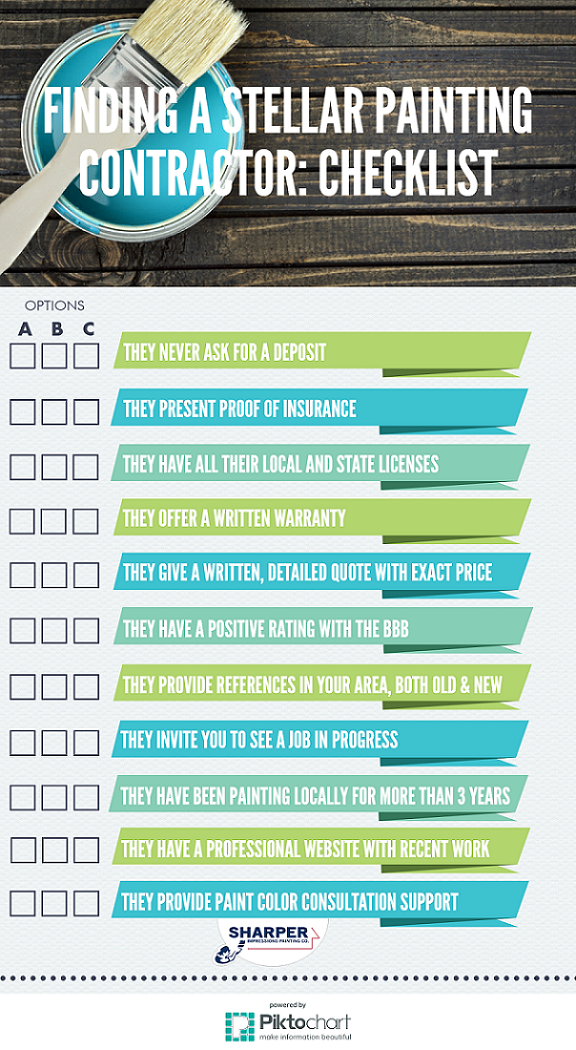Step-By-Step Interior Painting Tips For A Specialist Complete
Step-By-Step Interior Painting Tips For A Specialist Complete
Blog Article
Post Writer-Levine Birch
When it pertains to accomplishing an expert do with your indoor paint task, interest to detail is vital. From selecting the ideal paint and devices to executing the paint procedure thoroughly, each action plays a vital duty in the final outcome. However, there is one element usually neglected but essential for a remarkable finish-- the significance of correct air flow during the painting process. This often ignored aspect can dramatically affect the general top quality of your paint job. Interested to know more about how air flow can raise your painting outcomes?
Selecting the Right Paint and Equipment
Wondering which paint and tools are best for your interior painting task? When it comes to selecting the right paint, consider variables like the type of surface area you're repainting, the wanted finish, and the color choices offered. For walls, a latex paint is typically the very best option due to its sturdiness, simple clean-up, and quick drying out time. If you're painting a high-traffic area like a hallway or kitchen, a semi-gloss or satin finish may be preferable as they're simpler to cleanse.
When it comes to tools, investing in high-grade brushes and rollers can make a significant distinction in the final result of your paint work. Look for brushes with thick bristles that are suitable for the sort of paint you're using. Roller covers come in various nap sizes, with shorter naps being suitable for smooth surfaces like walls and ceilings, while longer snoozes are much better for textured surface areas.
Readying Your Room for Paint
To guarantee a successful indoor painting task, appropriate prep work of your area is essential. Beginning by eliminating furniture from the space or moving it to the center and covering it with plastic sheets. Next, remove any type of decors, change plates, and electrical outlet covers. Usage painter's tape to safeguard walls, trim, and any kind of locations you don't want to repaint. Fill openings and splits in the wall surfaces with spackling compound, after that sand them smooth once completely dry. Dirt and clean the walls to ensure appropriate paint attachment.
After preparing the walls, lay down drop cloths to safeguard your floors. If you're painting the ceiling, cover the entire floor area with ground cloth, securing them in position with painter's tape. Ensure click the up coming webpage by opening windows or making use of fans to assist with drying out and to lessen the fumes. https://andresfvlqz.myparisblog.com/34604991/step-by-step-instructions-for-preparing-your-home-for-experienced-house-painters but not least, collect all your paint materials in one area to have whatever you need within reach. Taking the time to prepare your area will make the paint process smoother and aid you achieve a professional surface.
Carrying Out the Paint Process
Begin by picking the suitable paint color and finish for the area you're painting. Think about the state of mind you wish to develop and how natural light affects the shade throughout the day. When you have your paint, collect premium brushes, rollers, painter's tape, and ground cloth. Before starting, make certain the wall surfaces are tidy and dry.
Start by cutting in the sides of the wall surfaces and around trim with a brush. Then, use a roller to cover larger areas, operating in small areas. Remember to maintain a damp side to avoid noticeable lap marks. Apply a second layer for a professional surface, if needed.
When painting doors and trim, use a smaller sized brush for accuracy. Job methodically, applying slim, even layers. Get rid of the painter's tape while the paint is still a little damp to avoid peeling.
Enable the paint to completely dry totally before moving furniture back right into area. Take your time and focus on detail for a perfect coating that will change the look of your room.
Conclusion
Now that you have adhered to these step-by-step suggestions for repainting your interior, you're well on your method to achieving a specialist coating.
By selecting the right paint and tools, preparing your room appropriately, and implementing the paint procedure with treatment, you can change your home right into a beautifully painted space.
Remember to take your time and appreciate the procedure for the best outcomes. Pleased painting!
